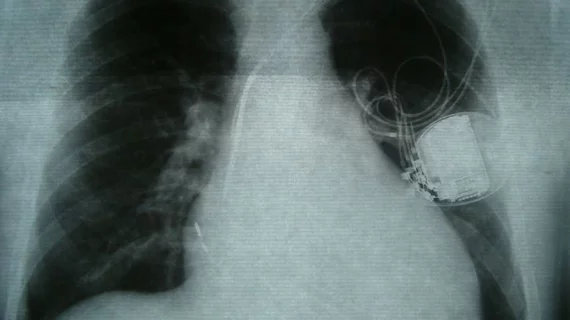Permanent pacemakers after TAVR: Tracking the impact of modern self-expanding valves
Permanent pacemaker implantation (PPI) remains a significant complication after transcatheter aortic valve replacement (TAVR) with a contemporary self-expanding valve (SEV), according to new research published in JACC: Cardiovascular Interventions.[1]
Device manufacturer have been working to minimize the risk of PPI after TAVR for years. The study’s authors aimed to determine if contemporary SEVs represented a step forward in that regard.
“New-generation self-expanding transcatheter heart valves … have been associated with favorable procedural and clinical outcomes, and are widely adopted devices for TAVR,” wrote first author Matteo Pagnesi, MD, a cardiologist with the University of Brescia in Italy, and colleagues. “Despite extensive research on PPI following TAVR over the last years, data regarding the risk and impact of PPI after TAVR with contemporary SEVs are lacking.”
Pagnesi et al. examined data from 3,211 patients who underwent transfemoral TAVR from January 2012 to December 2021. All data came from the NEOPRO and NEOPRO-2 registries. The mean patient age was 81.6 years old and 64.3% were women. All patients were treated with one of four self-expanding transcatheter heart valves: the Acurate neo (Boston Scientific), Acurate neo2 (Boston Scientific), Evolut PRO (Medtronic) or Evolut PRO+ (Medtronic).
Overall, PPI was required for 11.3% of TAVR patients within 30 days. This includes 8.8% of the 1,090 patients treated with the Acurate neo, 7.7% of the 665 patients treated with the Acurate neo2, 15.2% of the 1,312 patients treated with the Evolut Pro and 10.4% of the 144 patients treated with the Evolut Pro+.
PPI was more common among men than women. In addition, TAVR patients presenting with diabetes mellitus, right bundle branch block, a New York Heart Association functional class of III or IV or a history of coronary artery bypass graft all faced an increased risk of PPI. The same was also true for cases a lower depth of valve implantation.
Focusing on short-term outcomes, the authors found identified no significant differences when it came to all-cause mortality or cardiovascular mortality after 30 days. Also, left ventricular (LV) dysfunction, rehospitalization for valve-related symptoms and longer lengths of stay, however, were all more common among patients who would eventually require PPI.
A full year after TAVR, all-cause mortality and the combined outcome of all-cause mortality and cardiovascular-related rehospitalization were “significantly higher” among patients who required a PPI than those who did not.
“Careful THV selection and implantation seem crucial in patients at risk for new PPI, and alternative therapeutic options such as cardiac resynchronization therapy may be relevant in patients with LV dysfunction needing PPI after TAVR,” the authors concluded.
Read the full analysis here.

